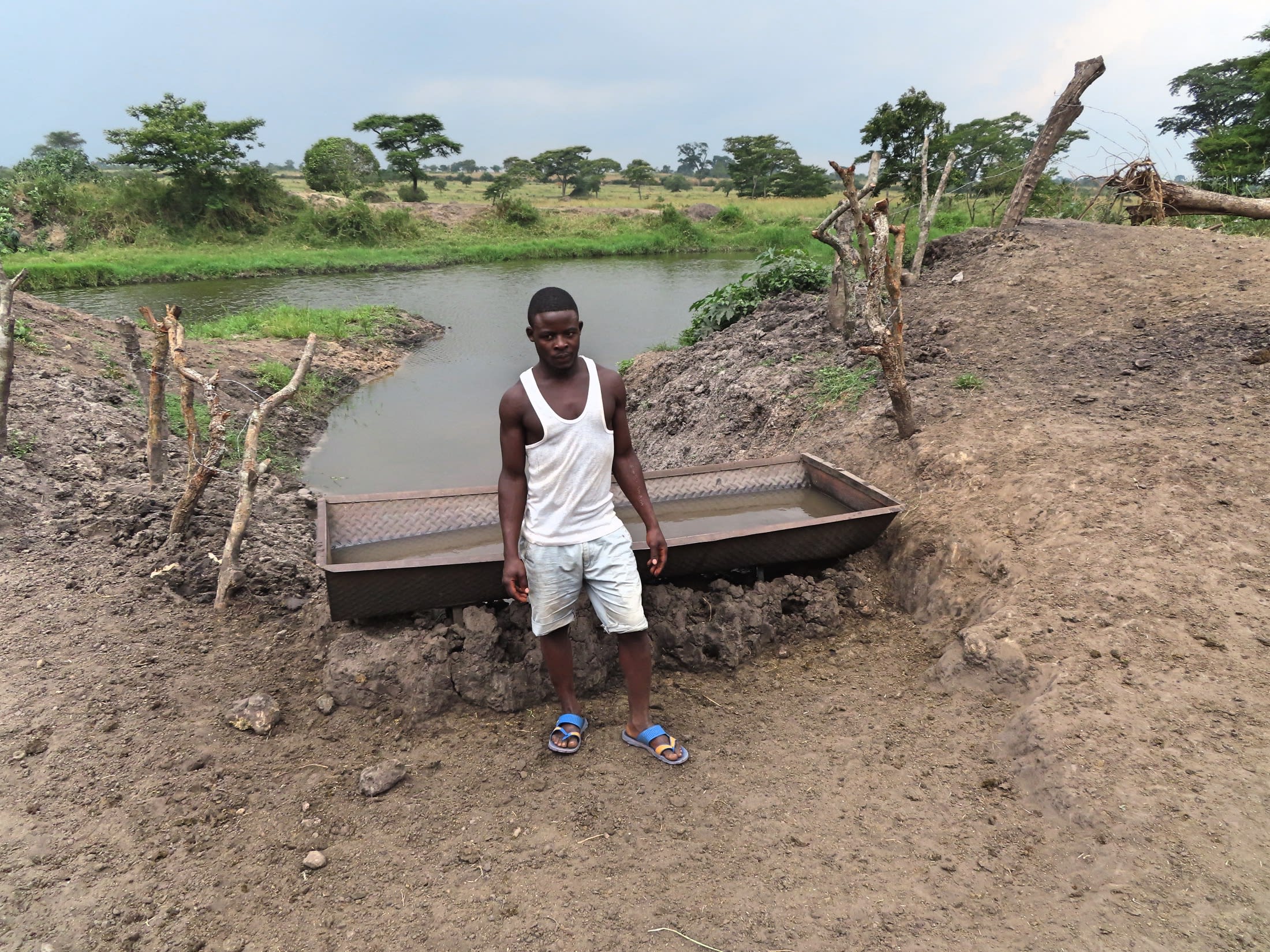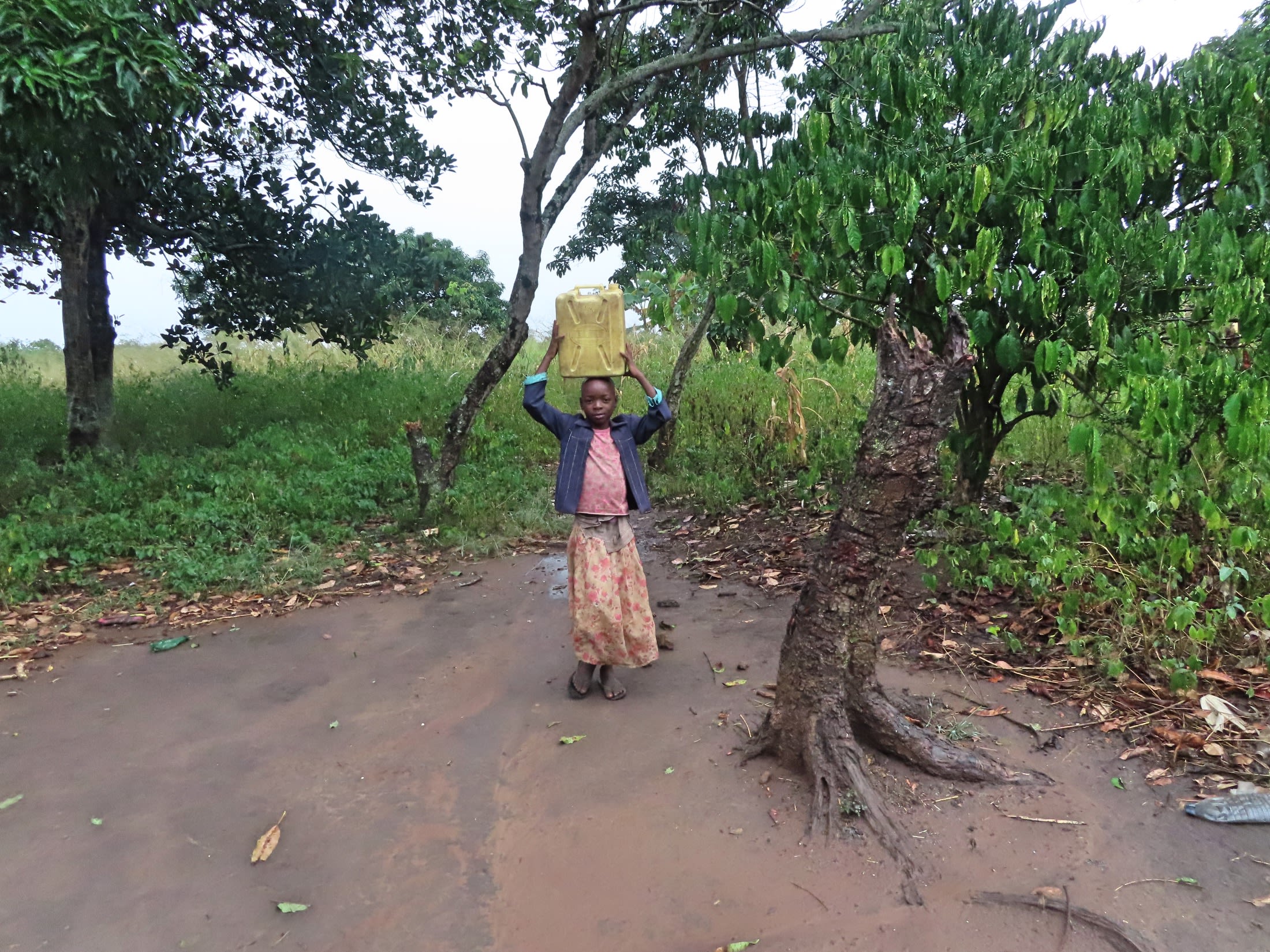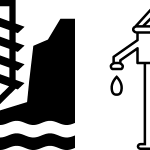During the rainy season in Katakungirwa, the community's 275 people collect rainwater or fill up their jerrycans at a dam, which was built to give cattle a bathing spot. But during the dry season, the dam dries up and there is no rain to collect.
So, for the last few dry seasons, the community has pooled their resources to pay for a truck full of water to be delivered to the dam. But each time, the water was gone within two days of the delivery. Katakungirwa's only other water option is a borehole over an hour away.
To avoid the long walk and not waste so much time, people use the water from the dam if they can get it. But the dam is not without issues.
"We don't have a borehole in our area," said 20-year-old cattle farmer Laban Nyankwasi (shown below at the dam). "Therefore, we use the water from the dam. This water is not safe because it is prone to contamination since we share it with animals. When it rains, cow dung is washed away in the dam."

He continued: "From our village to the next village where we can access safe water, it is seven kilometers (4.34 miles), and this makes it hard for someone to go there even when one has transport means, like a motorcycle, because of the high fuel prices currently."
"We always get sick because of using this water from the dam, as it's contaminated. We face challenges of typhoid and end up spending much money on buying medicine for treatment. This affects our planning and economic development because the money that would have been used for other activities is spent on medication."
"This water also affects kids' health as it causes diarrhea among kids. This leads to other sicknesses like malaria, and kids get stunted sometimes because of diarrhea. The absence of a protected water source in our area makes us buy drinking water from shops, hence spending a lot of money."
One person we spoke to had her youngest son, who is only a year old, almost die from typhoid recently. The health clinic workers told her to boil water, but she told our field officers that she can't always manage to do that while caring for her six other children.
Children in sub-Saharan Africa are more than 14 times more likely to die before the age of 5 than children in developed regions. - World Health Organization
Nine-year-old Judith K. (shown below returning home with water) spends hours each day fetching water, leaving her little time for anything else.

"I walk a very long distance of about two kilometers (1.24 miles) to and from the waterpoint," Judith said. "By the time I reach home, I am already tired, and it becomes hard for me to do other activities. At five p.m., when my elder siblings come back from school, we go back to collect water for bathing in the evening, so I rarely get enough time to do my homework or play with friends."
A close, safe water source will free up so much time and money for Katakungirwa's people, allowing them to spend money how they would like instead of just keeping themselves alive day-to-day.
Here’s what we’re going to do about it:
New Borehole
This new borehole is an exciting opportunity for this community! We work with the community to determine the best possible sites for this well.
We conducted a hydrogeological survey and the results indicated the water table is an ideal candidate for a borehole well. Due to a borehole well's unique ability to tap into a safe, year-round water column, it will be poised to serve all of the water needs for this community, even through the dry months.
Community members will help collect the needed construction materials such as sand, rocks, and water for mixing cement. They will also provide housing and meals for the work team, in addition to providing local laborers. We will complement their materials by providing an expert team of artisans and drilling professionals, tools, hardware, and the hand-pump. Once finished, water from the well will then be used by community members for drinking, handwashing, cooking, cleaning, and much more.
Training
Training’s main objectives are the use of latrines and observing proper hygiene practices since these goals are inherently connected to the provision of clean water. Open defecation, water storage in unclean containers and the absence of hand-washing are all possible contaminants of a household water supply. Each participating village must achieve Open Defecation Free status (defined by one latrine per household) prior to the pump installation for this borehole well.
This social program includes the assignment of one Community Development Officer (CDO) to each village. The CDO encourages each household to build an ideal homestead that includes: a latrine, a handwashing facility, a separate structure for animals, a rubbish pit and a drying rack for dishes.
We also implement the Community-Led Total Sanitation (CLTS) approach with each of our village partners. This aims to improve the sanitation and hygiene practices and behaviors of a village. During these sessions, village leaders naturally emerge and push the community to realize that the current practices of individual households – particularly the practice of open defecation – are not only unhealthy, but affect the entire village. CLTS facilitates a process in which community members realize the negative consequences of their current water, sanitation and hygiene behaviors and are inspired to take action. Group interactions are frequent motivators for individual households to build latrines, use them, and demand that other households do the same.
Improved Sanitation
The aim is that all households own an improved latrine. Many households do not use a latrine but use the bush. Due to open defecation, feces are spread all over the village. This leads to waterborne diseases and contamination of groundwater and surface water. Our aim is that the community is able to live a healthy life free of preventable diseases. We endeavor that at the end of our presence in the community, people will have both access to sustainable, clean water and access to sanitation. We have now organized families to form digging groups for latrine construction, and empowered them with tools to use.



 Rehabilitation Project
Rehabilitation Project


























